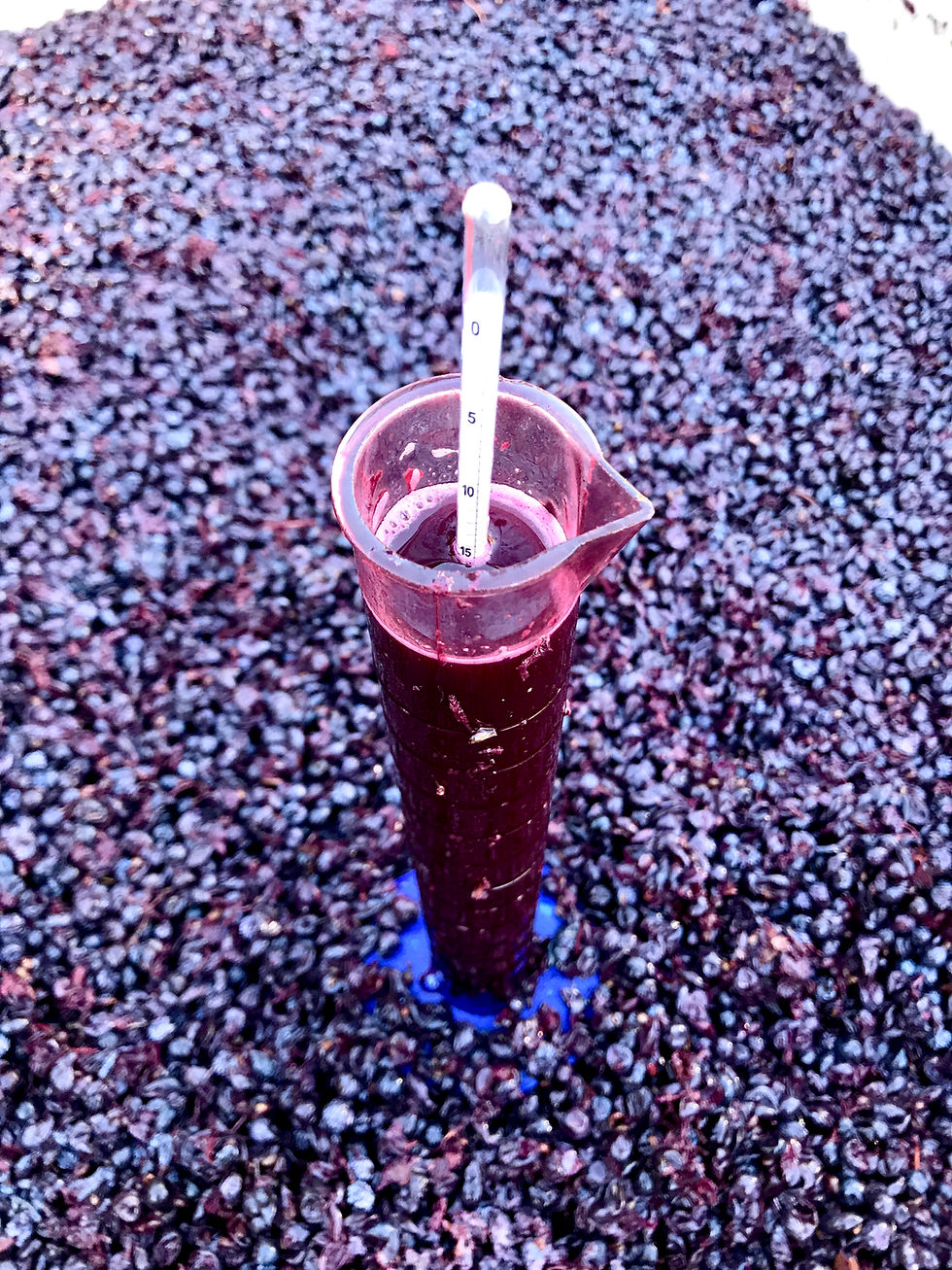2019 Lake County Vintage Report
- Pietro Buttitta

- Nov 4, 2019
- 3 min read

The 2019 vintage was a snapshot of extremes. A cold, wet and lingering Spring dropped an inch of thunderstorm-powered rain June 1st on Kelsey Bench, but somehow Lake County mostly escaped Spring frost damage, even in the higher-altitude Red Hills AVA. By July 20th we were about two weeks behind "normal" viticultural pace, and looking at a very cool, high-acid, austere vintage, which was an exciting but complicated prospect.
However, August was a different story all together. Regular multi-day stretches over 100F and very warm evenings, sometimes barely dropping below 65F in Kelsey Bench AVA accelerated the season radically. By September 1st some people were calling the season a few days ahead of normal, with brix readings running high in early and mid-season cultivars in conjunction with high acidity and low-ish phenolic ripeness from heat-induced hibernation. Late season grapes like Cabernet Sauvignon were location and crop load dependent in their sugar accumulation. Fortunately September brought significant cooling stretches mixed with spaced-out heat spikes. The initial harvest deluge was frantic, with most whites and early-season reds hitting all at once, and in the midst of a depressed grape market in free fall and wineries declining grapes, things seemed extra chaotic.
The end of September saw a solid week of plummeting temperatures however, slowing the rush and allowing fermentation tanks to finish and clear. This separated the grape harvest into an early and later period with some breathing room rather than pure chaos. For the second year some grapes, such as Zinfandel, reacted strangely to the temperature swings in our area, ripening up to three weeks later than normal (if at all) along with stubborn Merlot.

All things considered, the first half of the season clearly recalled 2017 with rain, high disease pressure from cool and humid conditions, and an ever increasing labor squeeze. The second half was similar to 2018, with a very hot August compressing the season, a frantic start, and then stalling out and setting the stage for a long and calm second half which really benefited late-ripening cultivars.
Expect crisp, early-picked Sauvignon blanc with hints of Old World phenolics and Chardonnay that is largely citrus driven if picked early due to sugar accumulation unless left to hang for tropical ripeness. Reds will be all over the board. Lighter reds picked in the bright and primary style of the moment will show pleasing angularity, savor and light color, but phenolic development may be lower. Bigger styles and Cabernet in particular required some patience to build ripeness with moderate acidity, but canopies needed to be cautiously full to protect against overexposure in August. Red Hills fruit showed good, bright acidity with just-enough Cabernet ripeness to make for a solid New/Old World mashup, the altitude mitigating August heat, though higher-elevation vineyards that were waiting for last-minute buyers had Fall frost to contend with in some spots. Those who were challenged by vineyard details at lower elevations could be either overripe from heat-challenged canopies, underripe from labor shortage and broken contract panic, or just perfectly right by staying the course. This was a vintage that will reward nuanced experience in the winery as well.
From the winery side this vintage differed from 2018 drastically. North Coast fermentations in 2018 were afflicted with record numbers of stuck and sluggish issues, and in retrospect we learned from grape analyses that nitrogen levels were the lowest in at least five years. Malolactic fermentations were all over the board. In 2019 fermentations have returned to normal, even running into the happy and easy category in many areas, and malolactic conversion has been blisteringly fast, sometimes taking place simultaneously with primary fermentation though not inoculated.
My view from the vineyard is that crop load becomes very important in these challenging swings. Canopies left too heavy ended up being perfect to protect from scorching August days. But, too little crop risks pushing alcohols far too high in the hot August nights. Too much crop load hurts phenolic development when the ripening curve compresses, and we processed much underripe fruit for people picking purely on sugar with screaming acidity and propane pyrazine. The new normal will require careful management right down the middle, preparing for the worst of cool starts and hot mid-seasons. One thing is sure though, the "new normal" will be a balancing act between many factors.




